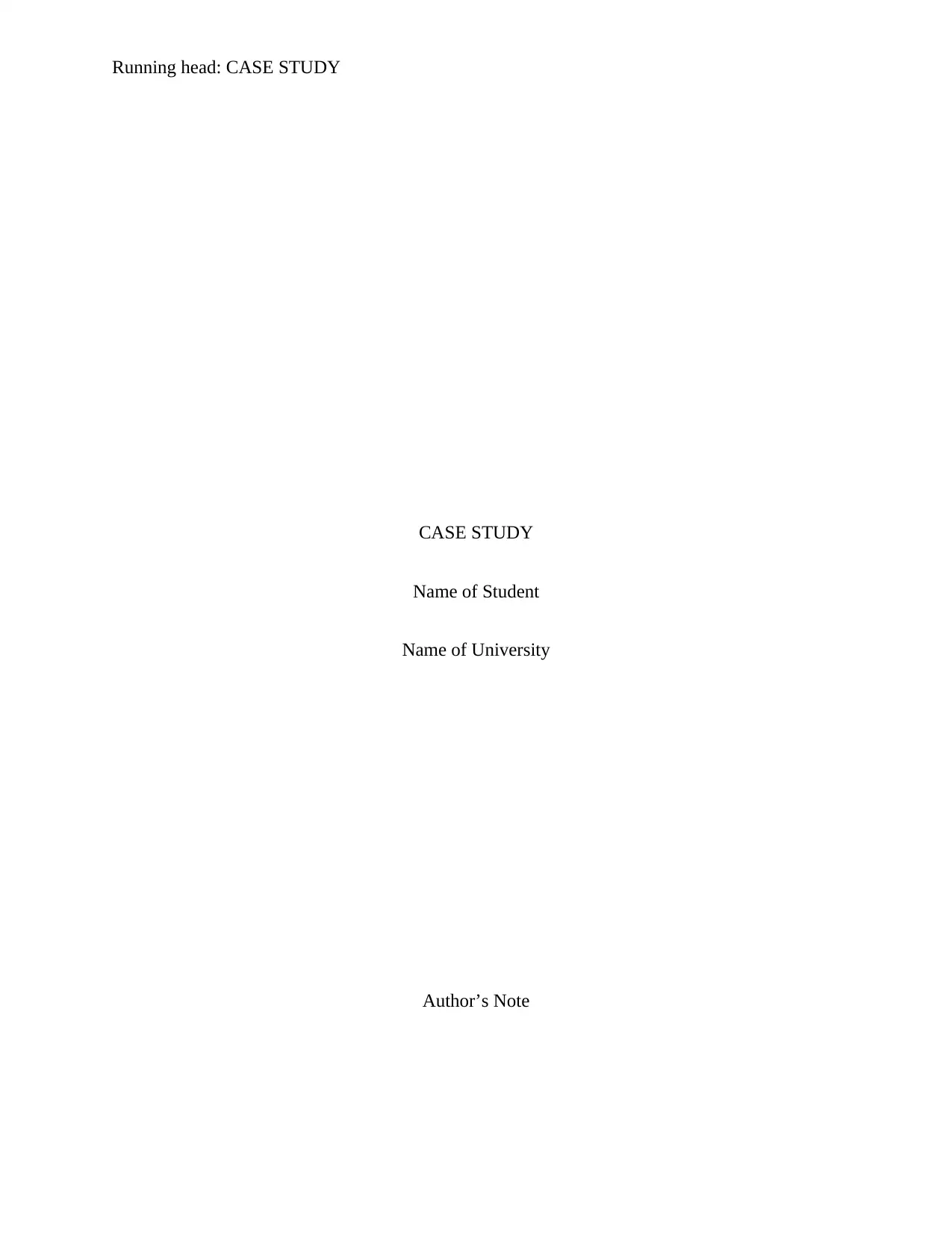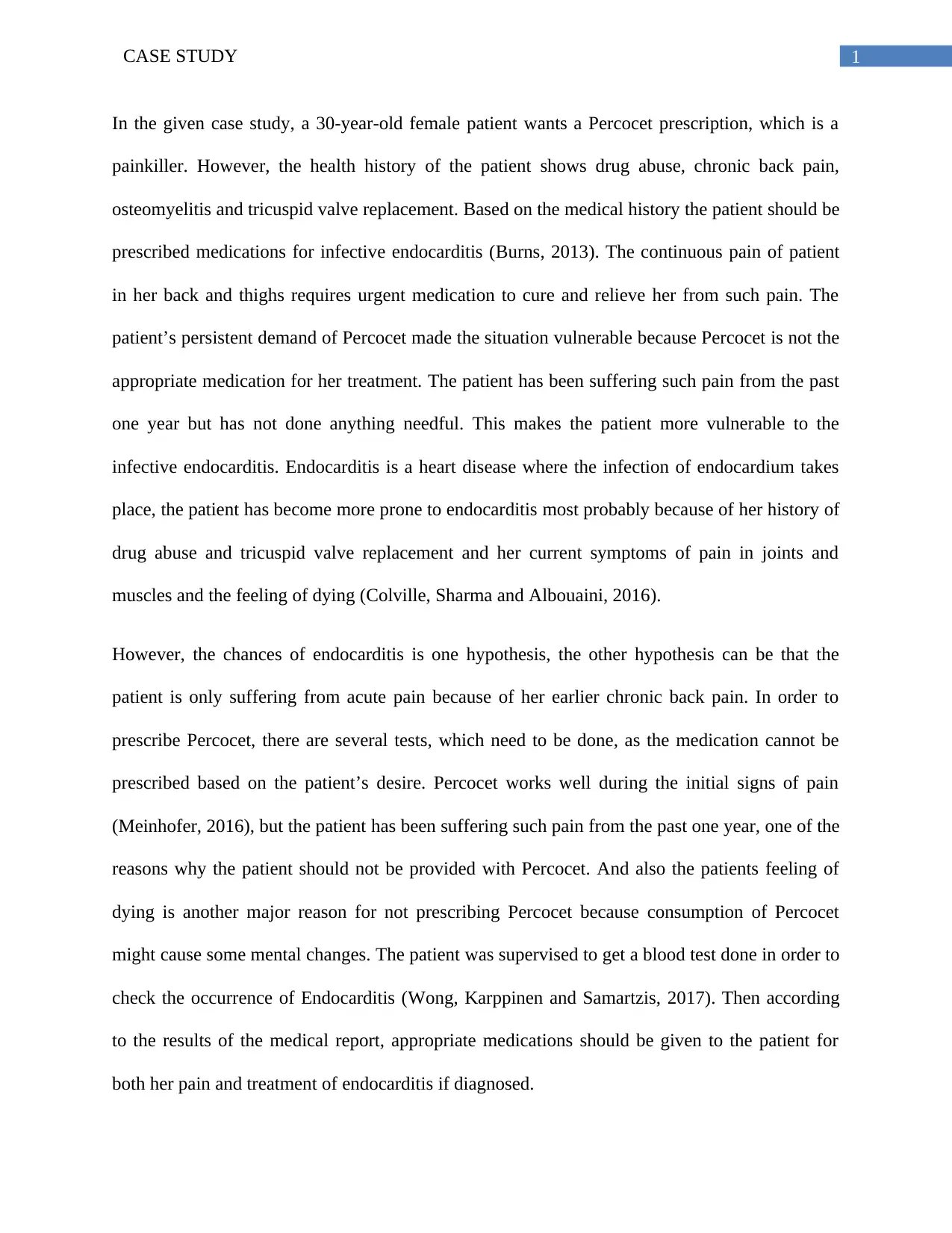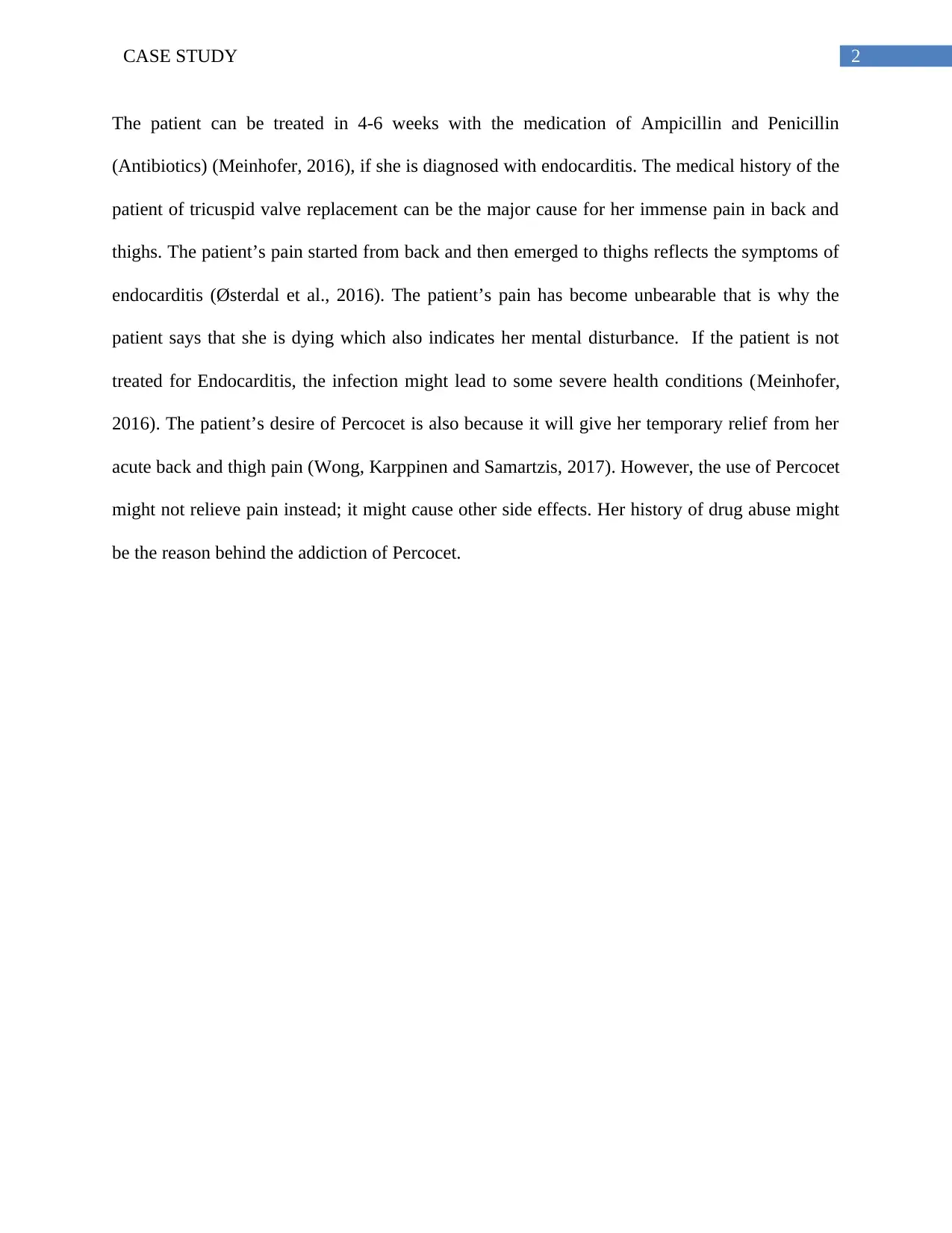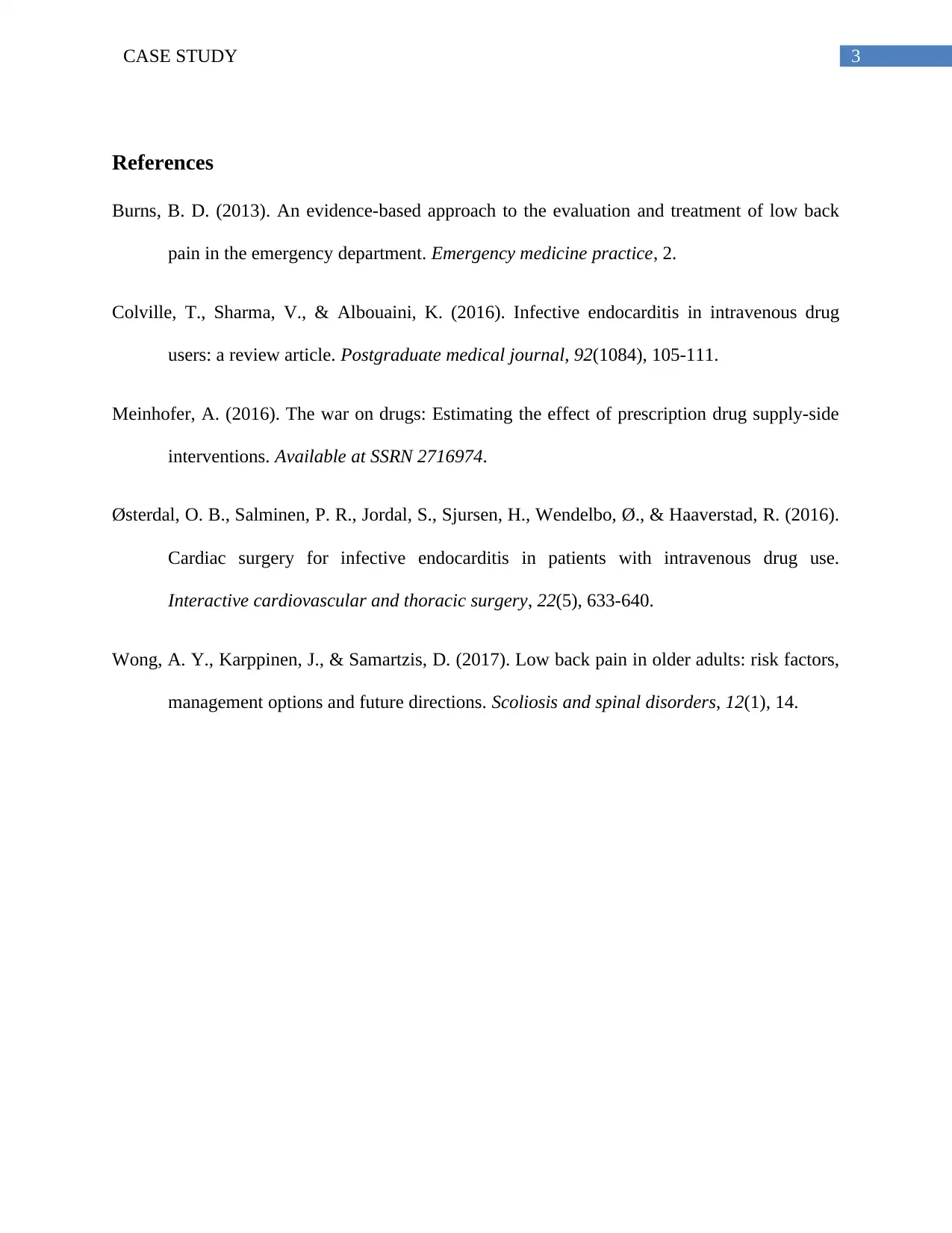Case Study: Endocarditis Risk and Treatment for a 30-Year-Old Female
VerifiedAdded on 2022/11/23
|4
|803
|343
Case Study
AI Summary
This case study presents a 30-year-old female patient seeking a Percocet prescription, but her medical history reveals drug abuse, chronic back pain, osteomyelitis, and a tricuspid valve replacement. The patient's symptoms, including persistent back and thigh pain and a feeling of dying, raise concerns about infective endocarditis, especially given her history. The case emphasizes the need for thorough medical evaluation, including blood tests, before prescribing medication. The study discusses the potential risks of prescribing Percocet, the importance of considering alternative treatments, and the potential for endocarditis due to her history. The analysis highlights the need to address both pain and potential underlying infections, with treatment options including antibiotics like Ampicillin and Penicillin if endocarditis is diagnosed. The patient's history of tricuspid valve replacement and drug abuse is a key factor in her condition.
1 out of 4











![[object Object]](/_next/static/media/star-bottom.7253800d.svg)